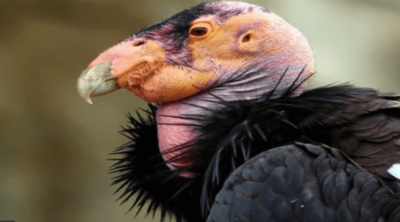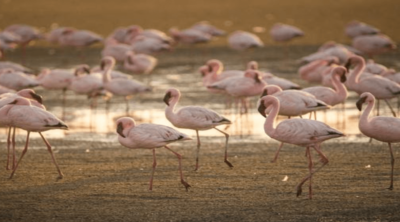
What comes to mind at first when you think of a bird? Flying, right! But Mother Nature never ceases to amaze us with exceptions to most rules. There are actually quite a few birds walking on our planet Earth who can’t lift off. Whether these are cases of poor aerodynamics or simply not the need of the hour, is food to chew on another day. For now, we’ll simply check out who these birds are, if I may call them so!
Survival Tactic
Most flightless birds are found on the remote islands and areas of New Zealand, Australia, and South America, simply due to the fact that, since they cannot escape predators by flying off, they need to stay in those areas where their predators are near to none.
The one thing that sets birds apart from us humans is their ability to fly. Take that away from them, and what do you have? Still a bird, but a flightless one at that. The reasons why these creatures have evolved into flightless birds over millions of years are varied. Some have proper wings but are simply too heavy for flight, while others have changed physically over time to adapt better to land surroundings.
Here is a list of the birds that cannot fly, in no particular order.
PENGUIN
Scientific Name: Spheniscidae
Distribution: Antarctica, Australia, New Zealand, South Africa, South America
Weight: 2 – 80 lb.
Lifespan: 6 – 20 yrs.
Status: Not Threatened
Penguins are birds that cannot fly, but are excellent swimmers, which is why they spend a lot of time in the water. Out of 18 penguin species, only 3 species live exclusively in Antarctica, while the rest are scattered in many places around the Southern Hemisphere.
Over millions of years of evolution has changed the wings of these birds into flippers, which are better suited for traveling through water. These flightless birds can in fact be called aquatic animals. They can reach speeds of up to 5 – 6 mph in the water.
Penguins live in colonies that can number in the hundreds of thousands in members. Their distinct waddling walk is what adds to their cuteness factor.
CASSOWARY
Scientific Name: Casuarius
Distribution: Australia, New Guinea
Weight: 100 – 130 lb.
Lifespan: 40 – 50 yrs.
Status: Endangered
The cassowary is the second-largest bird on our planet. Adults can grow up to around 1.8 meters (6 ft.) in height.
These birds grow a claw on their middle toe of their 3-toed feet, that is very sharp and can grow up to 4 inches in length. So you wouldn’t want to pester these birds, since they are known to kill humans too. In fact, in 2007, The Guinness Book of World Records named them as the most dangerous birds on Earth. But they are usually shy creatures, and aren’t dangerous unless provoked.
These mean machines can run up to speeds of 30 mph. They are usually found in the grasslands and forests.
STEAMER DUCK
Scientific Name: Tachyeres
Distribution: South America
Weight: 7 – 15 lb.
Lifespan: 15 – 20 yrs.
Status: Least Concern
These birds from South America are named so because of their habit of running on water while flapping their wings about. This somewhat resembles the wheels of a steam-powered boat or a paddled-steamer.
Steamer ducks are aggressive creatures, and there is known to be a lot of infighting in their groups. Except for the flying steamer duck, the other three in this species are all flightless.
The Fuegian steamer duck weighs around 9 – 12 lb., while the other types can weigh up to 20 lb. in body mass.
FLIGHTLESS CORMORANT
Scientific Name: Phalacrocorax harrisi
Distribution: Ecuador
Weight: 5.5 – 11 lb.
Lifespan: 40 – 50 yrs.
Status: Vulnerable
The flightless cormorant is found only in the Galapagos Islands in Ecuador. Their webbed feet and strong legs allow them to move fast in the shallow sea waters in search of prey.
These birds are mostly around 3 to 3½ feet in length, and one would be forgiven for mistaking them for ducks.
They prefer to dwell in shallow coastal waters, rocky shores, bays, rocks at the rim of volcanic islands, and straits, and tend to live in colonies comprising around a dozen pairs.
OSTRICH
Scientific Name: Struthio camelus
Distribution: Africa
Weight: 140 – 320 lb.
Lifespan: 40 – 45 yrs.
Status: Least Concern
The ostrich is the largest living bird on our planet, and is rightly called the ‘king of birds’. They became extinct from the Middle East in the mid-20th century, and are now found only in Africa.
Interestingly, when the dinosaurs were around, these birds could fly very well to escape becoming prey. But with the extinction of the dinosaurs, they no longer needed this ability, and would benefit more by walking on the ground to find food. As such, over millions of years, they lost the ability to fly.
Ostriches can grow up to 9 feet in height, and can reach speeds of around 40+ miles per hour, which is much faster than the fastest human ever. So you wouldn’t want to be messing around with one of them!
RHEA
Scientific Name: Rhea
Distribution: South America
Weight: 70 – 90 lb.
Lifespan: 15 – 20 yrs.
Status: Near Threatened
These greyish-brown flightless birds look quite similar to ostriches. In fact, they are relatives of the ostrich and emu.
Similar to the ostriches, they stopped flying millions of years ago to better adapt as land animals. There are two species – the greater (America) rhea and the lesser (Darwin’s) rhea.
Depending on the species, their size can range between 35 to 65 inches in height at the head. They prefer to dwell in the grasslands and woodlands, normally preferring to wander in open land areas.
TAKAHE
Scientific Name: Porphyrio hochstetteri
Distribution: New Zealand
Weight: 4 – 9 lb.
Lifespan: 14 – 20 yrs.
Status: Endangered
This bird went missing from around the 1800s till the mid-20th century, but were again discovered in the late 1940s.
These birds are comparatively small, standing at heights ranging from 1½ to 2 feet. They have distinctive bright-red beaks that stand out. Adults are bluish-purple in color, with greenish backs.
Takahes are quite noisy, but at the same time pretty shy. The males and females are usually of the same size.
WEKA
Scientific Name: Gallirallus australis
Distribution: New Zealand
Weight: ¾ – 3.5 lb.
Lifespan: 10 – 15 yrs.
Status: Vulnerable
These brown New Zealanders are small, but have a loud call nonetheless. Their size varies from 18 to 24 inches.
The weka’s beak too is brown, mostly a reddish-brown tinge. They love to dwell in forests, grasslands, and rocky shores. A reason for them being concentrated in the remote islands of New Zealand is the lack of predators there.
Earlier, these birds were commonly hunted as a source of food, oil, perfume, and feathers to be used in making clothes. Their curious and bold nature makes them an easy catch, which is why they have been hunted to near extinction.
EMU
Scientific Name: Dromaius novaehollandiae
Distribution: Australia
Weight: 40 – 130 lb.
Lifespan: 20 – 25 yrs.
Status: Least Concern
The emu is the second-largest bird in the world, and can reach speeds of up to 30 mph while running. They can reach heights of around 6 feet due to their long, thin necks and legs. They have one of the strongest legs around, and can even tear down fences and other obstacles.
Emus are shy flightless birds, and are mostly found in the grasslands and deserts of Australia. Their brown color easily camouflages them in the surroundings. Though, the grunt of an emu can be heard more than a mile away.
KIWI
Scientific Name: Apteryx
Distribution: New Zealand
Weight: 3 – 8 lb.
Lifespan: 10 – 30 yrs.
Status: Vulnerable
New Zealand’s national bird, the kiwi is a nocturnal bird which comprises five species. These birds are shy and have relatively poor vision, which is why their chances of survival are better off on far-off remote islands.
Besides being flightless, another distinct difference between them and other birds is that, their nostrils are at the tip of their bills, while other birds have it at the base of the bill. The Rowi from South Island is believed to live up to even 100 years.
Depending on the species, their height ranges from anywhere between 9 to 18 inches.
DODO
Scientific Name: Raphus cucullatus
Distribution: Mauritius (earlier)
Weight: 25 – 50 lb.
Lifespan: 20 – 30 yrs.
Status: Extinct
This one stands out in the list, because it is a well-known flightless bird, but sadly has been extinct since the middle of the 17th century. Most probably, it was their inability to fly away that led them to being hunted into extinction.
They were the size of a turkey, and lived on the island of Mauritius. They had greyish-brown plumage, with slightly lighter-colored feathers. These birds were not small in any way, and were usually 2½ to 3½ feet tall, with a long beak which had a hooked point.
They are believed to be a relative of the pigeon, but were not as robust, hence the inability to fly.
Another native of New Zealand, the Kakapo, also known as the ‘owl parrot’, is a flightless bird that is actually a parrot but has the face of an owl. This greenish-brown bird is known as the world’s heaviest parrot, but its numbers have fallen from the millions a few centuries ago to just around 100 – 200 at present.
These flightless birds have adapted over time to being grounded in a perpetual no-fly zone, which is nothing short of amazing. Maybe they can’t fly away in self-defense, but make no mistake, mess with them at your own risk!













